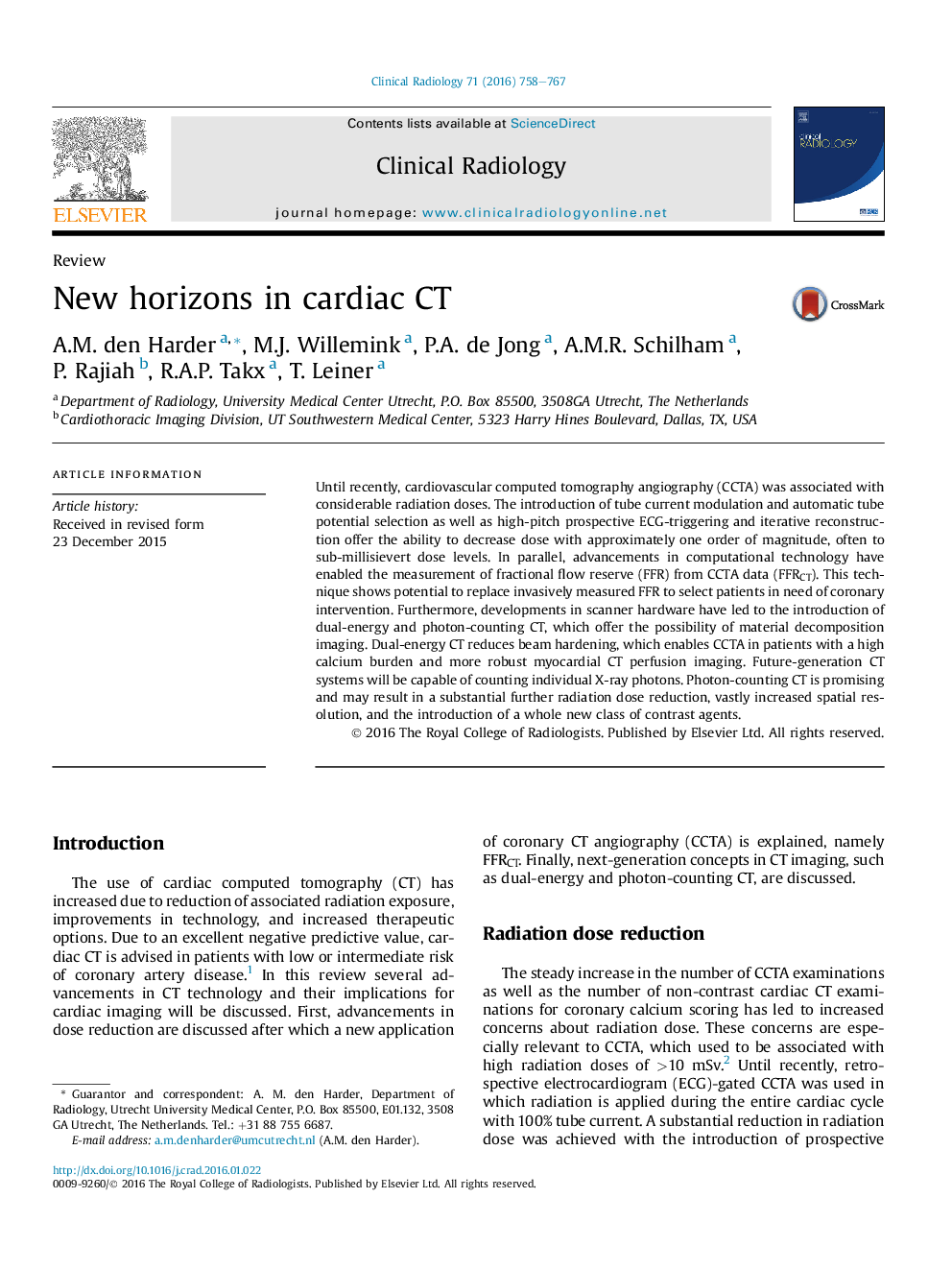| Article ID | Journal | Published Year | Pages | File Type |
|---|---|---|---|---|
| 3981165 | Clinical Radiology | 2016 | 10 Pages |
Until recently, cardiovascular computed tomography angiography (CCTA) was associated with considerable radiation doses. The introduction of tube current modulation and automatic tube potential selection as well as high-pitch prospective ECG-triggering and iterative reconstruction offer the ability to decrease dose with approximately one order of magnitude, often to sub-millisievert dose levels. In parallel, advancements in computational technology have enabled the measurement of fractional flow reserve (FFR) from CCTA data (FFRCT). This technique shows potential to replace invasively measured FFR to select patients in need of coronary intervention. Furthermore, developments in scanner hardware have led to the introduction of dual-energy and photon-counting CT, which offer the possibility of material decomposition imaging. Dual-energy CT reduces beam hardening, which enables CCTA in patients with a high calcium burden and more robust myocardial CT perfusion imaging. Future-generation CT systems will be capable of counting individual X-ray photons. Photon-counting CT is promising and may result in a substantial further radiation dose reduction, vastly increased spatial resolution, and the introduction of a whole new class of contrast agents.
